Last-Minute NYC Holiday Gift Guide 🎁
We’ve created a holiday gift guide with presents for the intrepid New Yorker that should arrive just in time—


It takes a certain type of person to get up on a Saturday morning to take a tour of an industrial wasteland. That type of person would be me, and about 20 others, who couldn’t resist the Atlas Obscura tour, “The Poison Cauldron of Newtown Creek,” a 3-hour tour they described as “an intense walking tour of the toxic hellscape of Newtown Creek.” The colorful tour was led by Mitch Waxman and Mai Armstrong of the Newtown Creek Alliance.
As an urban planner, Newtown Creek is one of those locations that you hope stick around even when a city cleans itself up, as a reminder of our industrial and irresponsible past. These days the city is promoting its shiny new Wastewater Treatment Plant (which you can take tours of too) but the land around it is a forgotten piece of New York with a volatile history. There’s a wonderful photographic book by Anthony Hamboussi, Newtown Creek: A Photographic Survey of New York’s Industrial Waterway

.
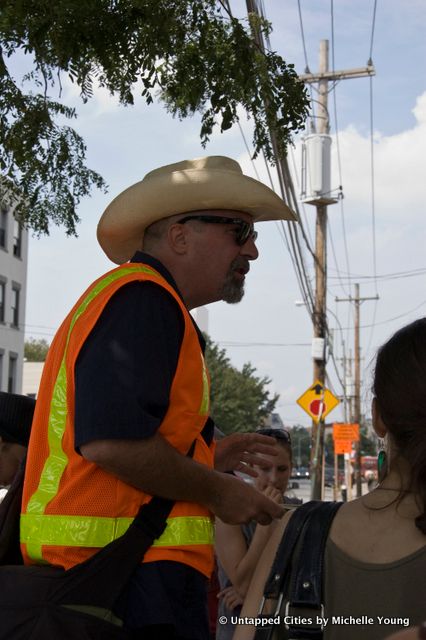
The tour began in Greenpoint, Brooklyn on the former facilities of Standard Oil, John D. Rockefeller’s monopoly, which encompassed over 50 acres along Newtown Creek, a former marshland. The Sherman Antitrust Act forced the division of Standard Oil into sub-companies, which include 6 of the largest global oil companies today: like ExxonMobil, to name just one.
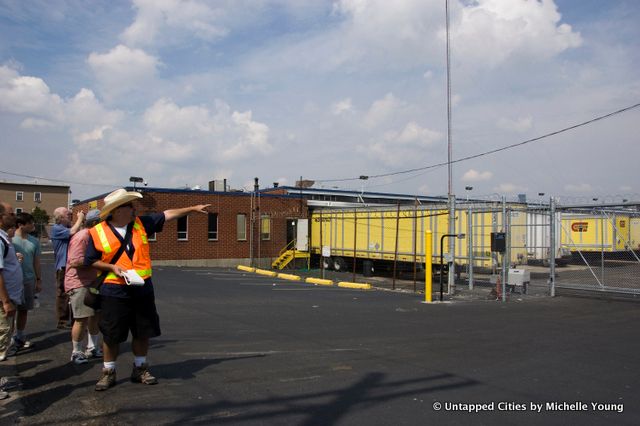
Mitch Waxman pointing out the extent of Standard Oil’s reach in this area.
Today, the land is occupied predominantly by warehouses, storage and industrial dry cleaning, but Exxon buildings and a BP Terminal remain. The landscape is defined through architecture and verbiage in the form of barbed wire and keep out signs.
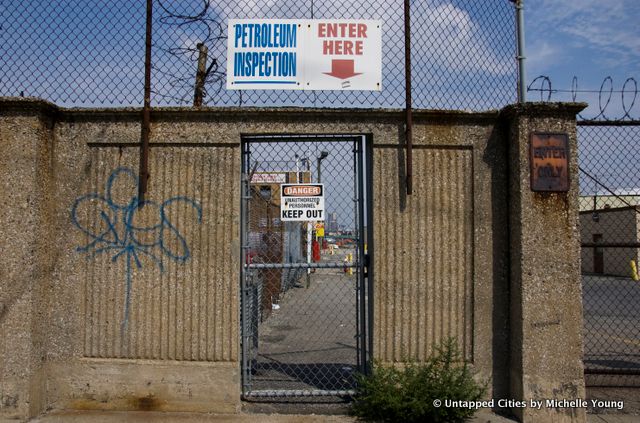
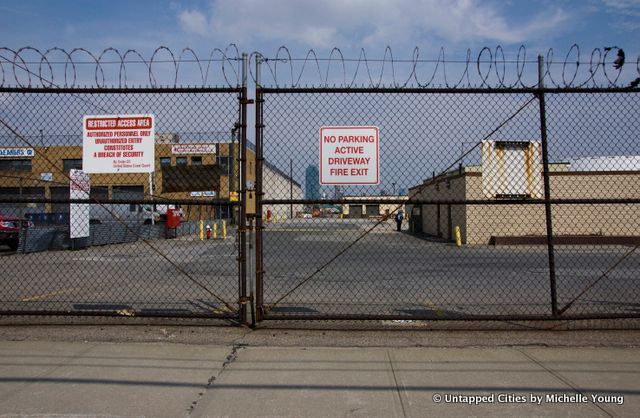
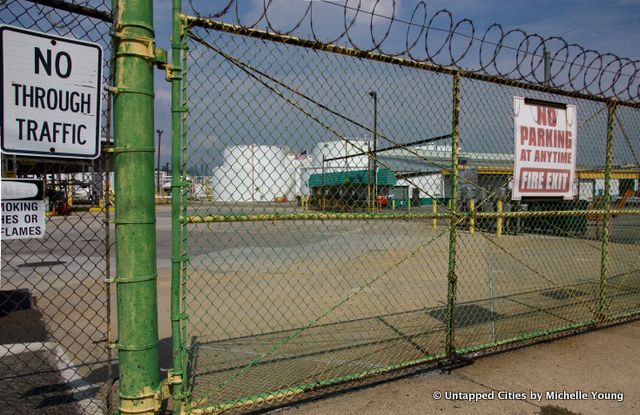
Exxon is extracting oil from the ground, leftover from the many oil spills and the hundreds of fires that roared through the refineries over the last 150 years (110 million gallons of oil were lost in a 1919 fire alone). If Exxon were to extract all of the oil, the ground would collapse, so they’re pumping heavy salt water into the water table.
All the roads dead end at Newtown Creek, a superfund site that has been the dumping ground for the city’s raw sewage, garbage, and the 17- 30 million gallons of spilled oil from the 1979 Greenpoint Oil Spill. As our guide explained, Newtown Creek has “paid the price for squeaky clean New York City.” Even today, 40% of all garbage goes through Newtown Creek.
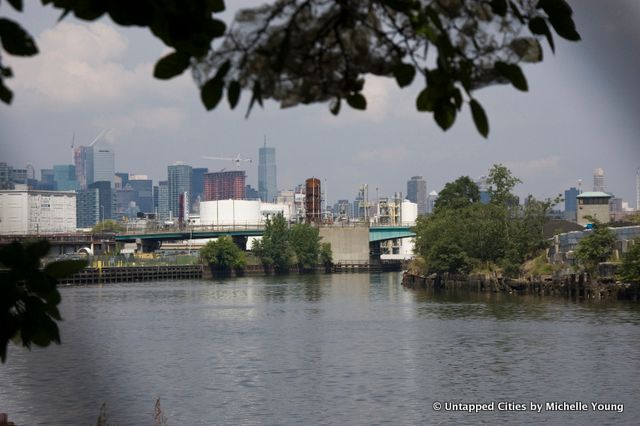
Abandoned Long Island Railroad Penny Bridge Station along Newtown Creek:
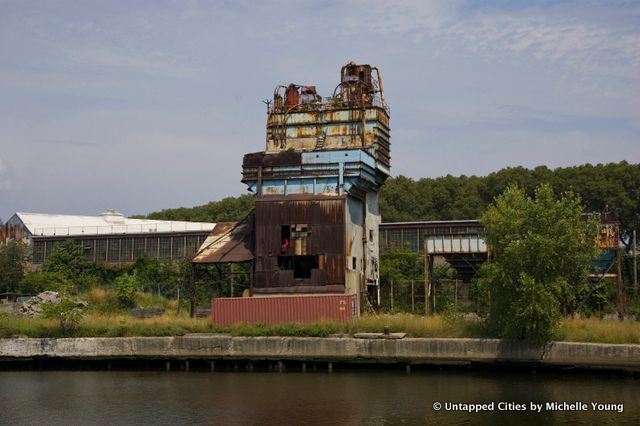
Cavalry Cemetery in the distance:
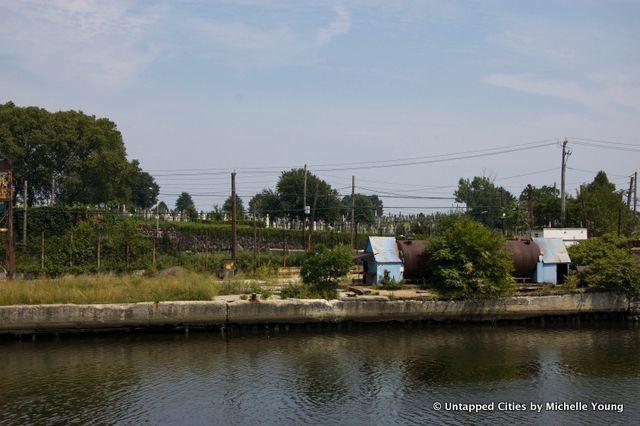
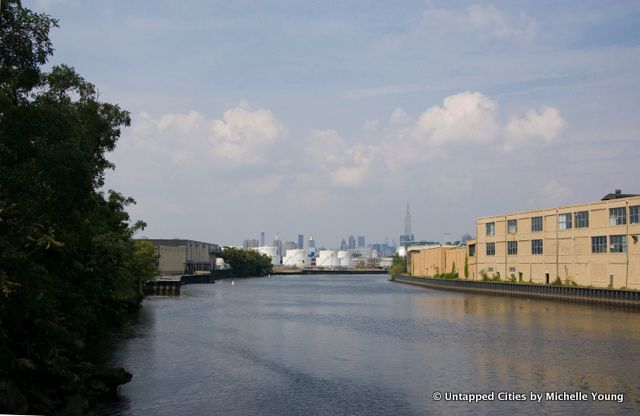
The tour continued under the Kosciuszko Bridge, home to salvage yards and recycle facilities. The noise from the industry and the bridge was deafening, and here we could feel that this was truly one of the forgotten places in New York–necessary but ignored.
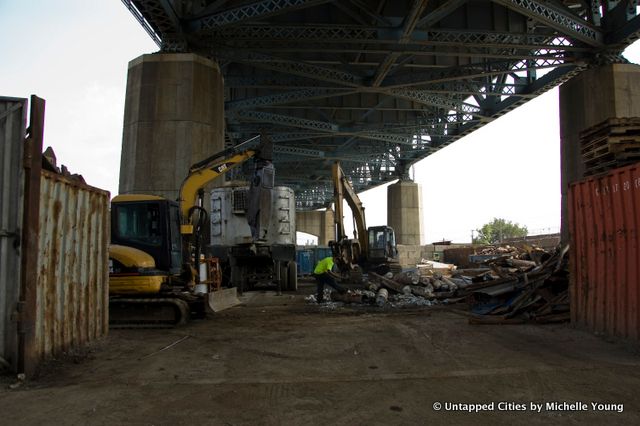
Connecticut tourism with quite the sense of humor to place their “still unspoiled” ad just over Newtown Creek:
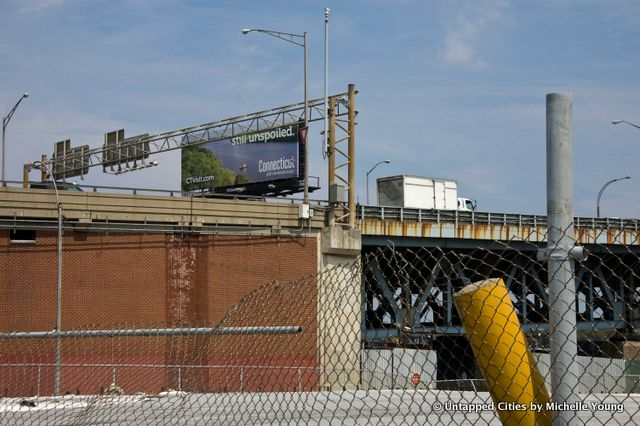
Still, there was something beautiful about the landscape in this area:
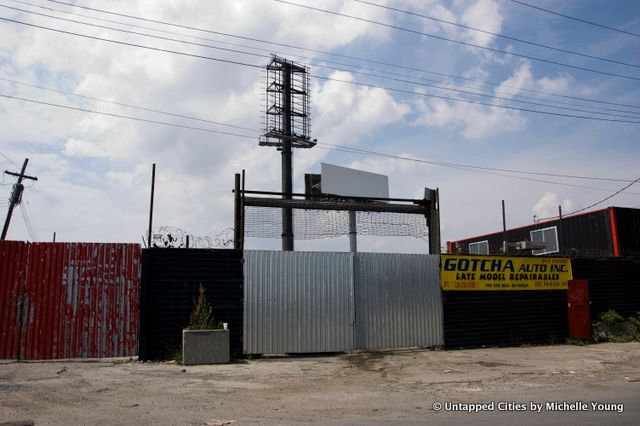
The area beyond was once the manufacturing facilities of Pfizer, as they made antibiotics during World War II. Mitch tell us that if detonated, the blast from the liquified natural gas tanks would knock windows out at Montauk in an atomic-bomb level destruction. It was a sobering moment.
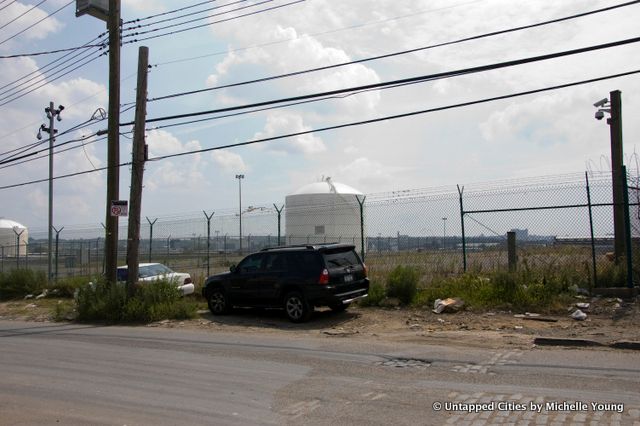
I highly recommend exploring this area of New York, right between Brooklyn and Queens. It’s hard not to wonder at man’s tendency to treat ambiguously defined territories as dumping grounds, just because they can–Gowanus Canal, Newtown Creek–until that land becomes desirable. The Newtown Creek Alliance is working hard to restore and revitalize it, and these tours are just one part of that.
Don’t miss the photographs from Newtown Creek: A Photographic Survey of New York’s Industrial Waterway

or the tours by Atlas Obscura.
Get in touch with the author @untappedmich.
Subscribe to our newsletter